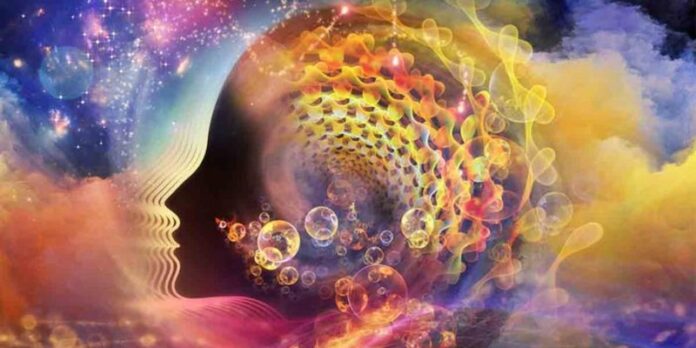DMT, or N, N-dimethyltryptamine, is a chemical substance that occurs naturally in many plants and animals, and can also be synthetically developed in a laboratory. DMT is also famously known as the “spirit molecule.” Some studies suggests that DMT is released naturally in the human body during pregnancy, childbirth and at the time of death, although research in this area is ongoing.
What is a DMT experience like?
DMT is one of the active ingredients in ayahuasca, but can also be taken on its own, as a synthetic substance. In its synthetic form, DMT can be injected or inhaled. A DMT journey begins almost immediately after consumption, usually within 5 minutes or less. DMT provides one of the shortest psychedelic experiences available, lasting between 30 and 45 minutes, on average. However, while it may be short in comparison to other substances, the intensity level of a DMT experience is extremely concentrated. Many participants describe full immersion and a total loss of “normal” consciousness during the experience.
Brief history of DMT
Although DMT is widely found in the plant and animal kingdoms, it was first isolated and synthesized in 1931, by a British chemist named Richard Manske. Synthetic DMT gained popularity in the 1960s. It became a controlled substance in 1971, under the Controlled Substances Act. Recently, however, researchers in the United Kingdom were granted permission to study the therapeutic potential of DMT.
DMT Safety
DMT is relatively safe when taken with appropriate precautions, but some risks are involved. Check out Psychedelic Experience’s general safety guide and recommendations.
Physical Safety
The possibility of overdose with DMT is extremely low. Some studies conducted on lab rats suggest that a lethal dose would be around 20 times what is typically consumed in a standard dose. However, as with ayahuasca, there is some risk of negative reactions due to interactions with other medications, including SSRI antidepressants. It is possible to experience serotonin syndrome when consuming DMT.
A DMT journey can be extremely intense and may result in a complete loss of consciousness (blackout), severely impaired mobility, incontinence, extreme changes in blood pressure, heart palpitations or heart attack, and fainting. Other safety concerns relate to distortions of time, space and ego that occur during an DMT journey. Having a safe environment and a reliable sitter is absolutely crucial for this reason, especially if taking a larger dose.
Psychological Safety
There is no evidence that psychedelics, including DMT, cause psychosis in otherwise healthy individuals. At the same time, psychedelics can cause latent psychosis to surface in some vulnerable individuals. People with a history of psychosis or serious mental illness, including schizophrenia and bipolar disorder, should take great care with any psychedelics, including DMT. It is recommended to start with a very low dose and assess one’s reaction before moving to higher doses.
DMT Science
Pharmacology
DMT, or N, N-dimethyltryptamine, is found naturally in most species of the plant and animal kingdoms, including humans. A recent study found that DMT was manufactured in the several areas of the brain in lab rats, including the pineal gland, cerebral cortex, and choroid plexus . The same study cited above found that DMT was released in particularly large quantities when cardiac arrest was induced in lab rats, a finding which supports the link between DMT and death, as well as near-death experiences.
Like LSD and psilocybin, DMT is a serotonergic psychedelic. In terms of structure, serotonergic substances resemble serotonin (5-hydroxytryptamine, 5-HT), a neurotransmitter. The close resemblance between DMT and serotonin means that it interacts with the brain’s serotonin receptors, causing alterations to brain function in terms of perception, cognition, and affect. DMT is the only known psychedelic substances that is endogenously produced in animals, including human beings.
Therapeutic Use
In addition to producing strong psychedelic effects, including vivid, intense, life-like visuals, DMT has strong antidepressant effects, anti-hypoxic effects and increases neuroplasticity.


